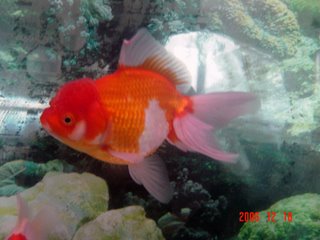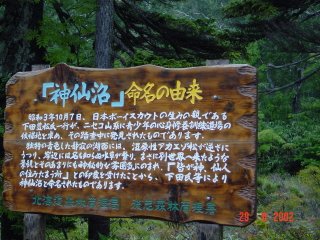
I purchased this goldfish from a pet shop at Prince Edward yesterday.
There are many pet shops at the Prince Edward District, selling goldfish, tropical fish, coral fish, and aquarium products. It was not easy to make a decision as there were so many choices.
Apart from the shops, fish hawkers gather together in a nearby area in the form of a flea market, with locally bred goldfish and tropical fish offering for sale at a very competitive price. These hawkers arrive at the vicinity in the early morning. They leave early as well.
The goldfish I purchased at the pet shop is a young male Tiger Head of Beijing origin. As you can see from the photo, the Tiger Head is in a very good shape.
Judging from its size, this Tiger Head is about 1 year old. This is the best size to start with. If the fish is too young, it is difficult to judge whether it will develop into a good shape. Mature fish with good shape is good but its colour and brightness will diminish as it grows older.
Some people find it difficult to differentiate between the Tiger Heads and the High Heads (also known as the Orandas). In fact, the difference between the two is that the rasberry-like head growth of a High Head stay on top of its head only,
like wearing a cap, whereas the growth of a Tiger Head develops further down to its face. The head growth will cover up most of the eyes and the mouth of a Tiger Head when the fish becomes mature. The Tiger Heads are also sometimes mistaken for the Lion Heads. A Lion Head has head growth just like a Tiger Head but the Lion Head is smaller in size and does not have a dorsal fin on the back.
The head growth of a Tiger Head will develop as the fish grows up. The development of the head growth is not easy without feeding live food. Frozen worms are available at the fish shops but they do not appear to be attractive to the goldfish (at least to those in my fish tank!).
The goldfish is of China origin but was brought to the other parts of the world by the businessmen many years ago. These goldfish has been settled down in foreign land with new varieties developed. It is said that the Tiger Head was exported from China to Japan in 1800s. It is known as the Shishigashira Oranda in Japan. Goldfish developed by the Japanese is famous for its regular shapes and colours.
In China, there are 5 major varieties of goldfish: The "Grass", the "Gentle", the "Dragon Eyes", the "Egg" and the "Dragon Back". The Tiger Head and the High Head belong to the "Gentle" variety. The Lion Head as mentioned above belongs to the "Egg" variety.
 One of my Cattleyas is blooming again.
One of my Cattleyas is blooming again.



















